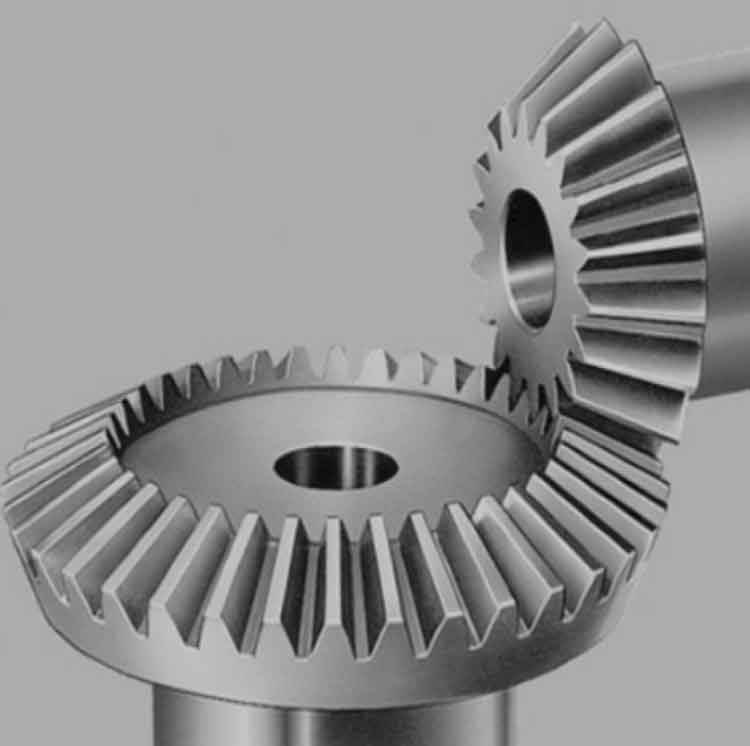Straight bevel gears are used in various configurations to achieve specific functions and performance characteristics. The most common configurations of straight bevel gear pairings are:

1. External-to-External Configuration:
- In this configuration, both the driving and driven gears have their teeth cut on the external surface. The gears mesh externally, and power is transmitted between two parallel shafts intersecting at a right angle. This configuration is commonly used in differential gear assemblies, automotive rear-wheel drive systems, and other applications where compactness and efficiency are crucial.
2. Internal-to-Internal Configuration:
- In this setup, both the driving and driven gears have their teeth cut on the internal surface. This configuration allows for a more compact design and is often employed in applications where space is limited or where the gear assembly needs to be housed within a specific enclosure.
3. Internal-to-External Configuration:
- In this configuration, one gear has teeth on the internal surface, and the other gear has teeth on the external surface. This configuration allows for flexibility in design and can be used to achieve specific gear ratios or direction of rotation changes. It is commonly used in speed reducers, power transmission systems, and other industrial machinery applications.
4. Miter Gear Configuration:
- Miter gears are straight bevel gears with equal numbers of teeth and axes at a 90-degree angle. They are often used to transmit motion between intersecting shafts at a right angle without changing the rotation direction. Miter gears find applications in various equipment, including printing presses, woodworking machinery, and instrumentation.
5. Crown Gear Configuration:
- Crown gears are a type of straight bevel gear where the teeth are cut perpendicular to the gear’s face, creating a flat or crown-like shape. Crown gears are typically used in applications requiring a change in the rotational axis direction by 90 degrees without any axial offset.
6. Zerol Bevel Gear Configuration:
- Zerol bevel gears are similar to straight bevel gears, but the teeth are curved instead of straight. This modification reduces axial thrust and noise compared to conventional straight bevel gears. Zerol bevel gears are used in applications where low noise and smooth operation are essential.
Each configuration of straight bevel gear pairings offers unique advantages and is chosen based on the specific requirements of the application, including space constraints, gear ratio, direction of rotation, and load-bearing capacity. Engineers carefully consider these factors when selecting the appropriate straight bevel gear configuration for a given mechanical system.
